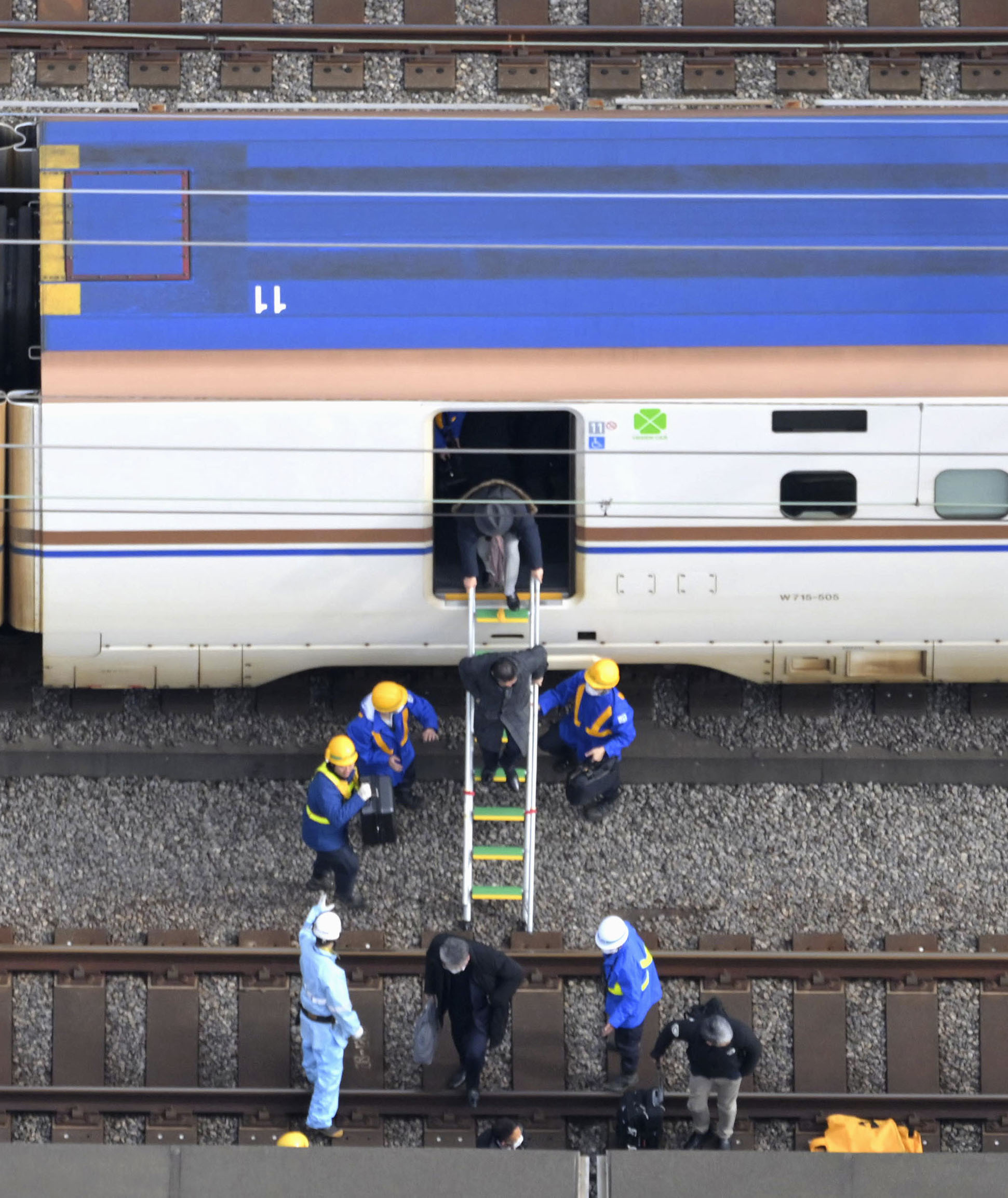Power outage hits bullet train service in Tokyo, other parts of Japan

TOKYO, Jan. 24 Kyodo - A power-outage incident that hit a bullet train as it ran north of Tokyo on Tuesday resulted in cancellations for about 280 other shinkansen in eastern and central Japan, with the operator estimating some 120,000 people were affected.
The operator JR East said it will carry out repair work in an effort to resume normal bullet train service Wednesday morning, though it has already decided to cancel one run each on the Tohoku and Yamagata shinkansen lines in the morning.
Sections of the Tohoku, Joetsu and Hokuriku shinkansen lines were affected after a 12-car bullet train lost power at around 10 a.m. when it crossed a section of track in Saitama Prefecture where an overhead electrical wire was hanging down, said the company formally known as East Japan Railway Co.
The Hokuriku line's Kagayaki 504 train, running from Kanazawa to Tokyo, suffered damage to two pantographs and a window, along with track structures including metal parts supporting the wire, the operator said.
JR East said the Tuesday accident led to cancellations for 283 trains and widespread disruptions for routes connecting to Tokyo, citing the possibility of delays or suspensions Wednesday depending on the progress of the repair work.
The bullet train lines affected by the accident cover areas between Tokyo and cities such as Sendai, Fukushima, Niigata and Kanazawa.
As the company worked to resume services, two men involved with the repair work were taken to hospital following an explosion near the location of the fallen wire, local police said.
One of them sustained severe burns to many parts of his body and the other had his hands burned, the police said, adding that none of the injuries were life-threatening. JR East said a repair worker suffered an electric shock.
Around 350 passengers disembarked from the train onto the tracks and were safely guided to the ground using emergency stairs by around 1:30 p.m. The operator reported that no one sustained injuries or complained of health issues.
"I heard big sounds and thought it was another earthquake," said Yoshiko Horii from Toyama Prefecture, one of the areas rocked by the magnitude 7.6 quake on New Year's Day, who was on a shinkansen train bound for Tokyo when it was halted.
"I was surprised. I am glad we could leave the train," said the 74-year-old Horii after descending from the train using the emergency stairs.
Many passengers, including tourists, were forced to suddenly change their travel schedules after JR East said a restart would take "considerable time."
In JR stations affected by the suspensions, people lined up to speak with station staff or to apply for ticket changes after announcements about major delays were made.
"There's nothing we can do," said Ryuji Sekine, 33, who was in the northeast city of Sendai for a business trip from Tokyo and planned to go on to Niigata Prefecture. "If services are suspended in the afternoon, then I'll have no choice but to stay in Sendai tonight," he said.
A 68-year-old woman from Sendai said after arriving in Tokyo, "My train stopped just before Omiya (station in Saitama), and we didn't move for about 30 minutes."
"The train eventually made it to Omiya, and I ended up taking a conventional line service to Tokyo...now my plans are thrown off," she said.
Following the power outage, services were initially suspended between Tokyo and Sendai stations on the Tohoku line, Tokyo and Echigo-Yuzawa on the Joetsu line, and Tokyo and Nagano on the Hokuriku line.
From around noon, the operator started bringing back services at some of the affected sections. However, services between Tokyo and Sendai on the Tohoku line and Tokyo and Takasaki on the Joetsu and Hokuriku lines remained suspended throughout Tuesday.
==Kyodo





